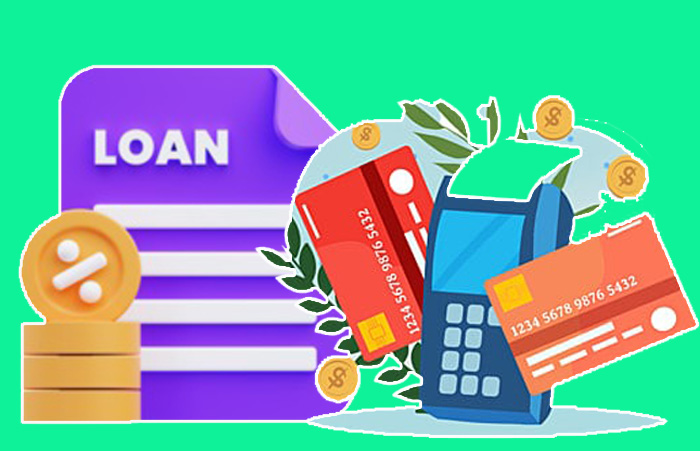Understanding Line of Credit – A line of credit (LOC) is a financial tool that provides convenience and flexibility for individuals and businesses to access funds when needed. In this blog, we will explore the definition of LOC and its significance in both personal and business finance, along with key points to help you effectively understand and leverage this financial instrument.

What is a Line of Credit (LOC)?
A line of credit serves as a ready source of funds that can be utilized at any time, with borrowers only paying interest on the amount they use. Unlike conventional term loans, a line of credit offers the flexibility of borrowing and repaying on an ongoing basis, making it a valuable financial tool for managing cash flow and unexpected expenses. This means borrowers can withdraw and repay funds as needed within the credit limit and terms set by the lender.
Consider a scenario where an individual possesses a personal line of credit with a limit of $10,000. They may initially utilize $3,000 for home renovations, repay $1,000, and subsequently access an additional $2,000 for medical expenses. This would leave them with an effective available borrowing amount of $8,000. Unlike fixed-rate loans, the interest on this type of credit is usually variable, fluctuating based on market conditions.
Comparison with Conventional Loans and Credit Cards
In contrast to traditional term loans, lines of credit provide greater flexibility, empowering borrowers to manage their financial requirements efficiently. While conventional loans provide a lump sum upfront, lines of credit offer the advantage of accessing funds as needed, potentially reducing the overall interest incurred. Moreover, lines of credit often feature lower interest rates compared to credit cards, making them a cost-effective choice for managing short-term financing needs.
Also unlike credit cards, lines of credit can offer more substantial credit limits and lower interest rates, making them suitable for important expenses. They do not require cash advances or incur associated fees, and their flexible repayment schedules provide improved financial control compared to credit cards.
How Does a Line of Credit Work?
The process of obtaining a line of credit involves several steps aimed at assessing your creditworthiness and needs before initiating an application. Let’s delve into a comprehensive breakdown of how a line of credit works:
- Evaluating Your Needs and Eligibility: The initial step involves determining your financial needs and ensuring eligibility for a line of credit. This entails evaluating your income, expenses, and the purpose for which you require the credit line.
- Researching and Comparing Lenders: The next step is to conduct research and compare different lenders offering lines of credit.
- Application Process: After selecting a lender, you must initiate the application process, which typically involves completing an application form. This form may require personal and financial information, employment details, and other relevant documentation. The lender evaluates this information to assess your creditworthiness and determine the terms of the line of credit extended to you.
- Credit Evaluation: The lender conducts a thorough evaluation of your credit history, income, and other financial factors to determine your ability to repay the line of credit. This evaluation helps the lender determine the maximum credit limit and applicable interest rate for your line of credit.
- Approval and Disbursement: Upon successful completion of the credit evaluation process, the lender approves your line of credit based on the determined terms. The authorized credit limit is communicated to you, and once accepted, the funds become available for your use.
Types of Lines of Credit
Each type of line of credit offers unique benefits and considerations, and choosing the right one depends on individual financial goals, needs, and circumstances. And it can be tailored to meet diverse needs. Let’s explore the different types of lines of credit:
- Personal Line of Credit: A personal line of credit is a flexible borrowing option for individuals. It’s typically unsecured, meaning it doesn’t require collateral. This type of line of credit can be beneficial for managing unexpected expenses, consolidating high-interest debt, etc.
- Business Line of Credit: These are designed to assist companies with managing cash flow and covering operational expenses. These lines of credit are essential for addressing short-term financing needs or bridging gaps in cash flow.
- Home Equity Line of Credit (HELOC): These types of credits allow homeowners to tap into their home’s equity and they typically offer lower interest rates compared to other forms of credit.
- Secured vs. Unsecured Lines of Credit: These are categorized as either secured or unsecured. Secured lines of credit are backed by collateral. Meanwhile, unsecured lines of credit are the opposite.
The Advantages of Line of Credit
Utilizing a line of credit offers several advantageous features that benefit both individuals and businesses. Let’s explore some of the key advantages:
- Flexibility: A primary benefit of a line of credit is its flexibility. Unlike traditional loans with a fixed amount, it provides a pre-approved pool of funds that borrowers can access as needed. This offers the flexibility to use the funds for various purposes.
- Quick Access to Funds: Individuals and businesses have quick access to funds when needed, which can be particularly beneficial in emergencies or for time-sensitive financial needs.
- Improved Cash Flow Management: Access to a line of credit helps individuals and businesses better manage cash flow. It acts as a safety net for unexpected expenses and helps smooth out fluctuations in income and expenses.
- Builds Business Credit: For businesses, effective line of credit management aids in building a positive credit history. This can be beneficial when seeking additional financing or establishing relationships with suppliers and creditors.
- Debt Consolidation: You can consolidate higher-interest debt, such as credit card balances, into a single, lower-interest account. This can help individuals save on interest costs and simplify the repayment process.
- Borrowing Limit: When approved for a line of credit, borrowers receive a specific borrowing limit, serving as a financial guideline. This provides a clear understanding of the available funds for use.
The Disadvantages of Lines of Credit
Lines of credit can be powerful financial tools, but despite their advantages, it’s essential to be aware of the potential risks and limitations. The following are some of the key disadvantages that individuals and businesses should be aware of when utilizing line of credit:
- High-Interest Rates: One significant drawback of lines of credit is the potential for high interest rates. While they may not be as expensive as business credit cards, the interest rates on lines of credit can still be relatively high, especially for individuals or businesses with lower credit scores.
- Temptation to Overspend: Another risk of using a line of credit is the temptation to overspend. There’s a potential for individuals or businesses to borrow more than they need, leading to financial strains and difficulties in repayment.
- Collateral Requirements: Some lines of credit may require collateral, which places assets at risk in case of default. This can be a significant limitation for individuals or businesses that may not have valuable assets to offer as security.
- Potential for Overborrowing: Due to the flexibility of borrowing money as needed, there is a risk of over-borrowing with lines of credit. This can lead to a situation where the borrowed amount exceeds what an individual or business can realistically repay, resulting in financial strains and potential default.
How to Qualify for a Line of Credit?
Understanding the factors that influence qualification for a line of credit can help you prepare and position yourself for a successful application. Here are some key factors that lenders often consider when assessing an individual or business for a line of credit:
- Credit Score: Lenders commonly require a minimum credit score to qualify for a line of credit. A higher credit score indicates lower credit risk, which may increase the chance of approval.
- Income and Financial Stability: Lenders may evaluate your income and financial stability to ensure that you have the means to repay any borrowed funds. This can include reviewing your employment status, income level, and stability of income sources.
- Business Existence and Revenue: For businesses seeking a line of credit, lenders often require the business to have been in existence for a certain period, such as six months or more, and to demonstrate a minimum annual revenue.
- Eligibility Criteria: Different lenders may have specific eligibility criteria that applicants must meet. This could include factors such as age, citizenship status, etc.
- Required Documentation: Applicants may need to provide specific documentation, such as bank statements, tax returns, business financial statements, and other relevant paperwork.
Tips for Managing a Line of Credit Effectively
Managing a line of credit effectively is essential for maintaining financial stability and strategic allocation of funds. Here are some tips for effectively managing a line of credit:
- Understand Your Credit Limit: Before utilizing your line of credit, fully grasp the credit limit. Knowing this limit is essential for making informative financial decisions and avoiding overextension.
- Fees: It’s vital to be aware of any associated fees, such as transaction fees or annual charges. Including these fees in your financial planning ensures that accurately assess the cost of utilizing the line of credit.
- Pay on Time: Timely repayment is key to effectively managing a line of credit. By meeting payment deadlines, you can improve your credit score and avoid incurring penalty fees or interest rate hikes.
- Pay More than Your Minimum: Paying more than the minimum can accelerate the reduction of outstanding balances. This not only reduces the overall interest paid over time but helps in paying off the debt faster.
- Monitor Your Credit Score: Regular monitoring enables you to identify areas for improvement. A good credit score can lead to better terms and conditions for future credit requirements.
- Understand the Terms and Conditions: Familiarize yourself with the terms and conditions of your lines of credit. Knowing the specifics, such as variable interest rates or restrictions, allows for informative decision-making when utilizing the line of credit.
- Seek Professional Advice: Seeking advice from a financial advisor or credit counselor can provide valuable insight and assistance in navigating your financial situation.
Conclusion
A line of credit, much like a traditional loan, necessitates adequate credit and repayment of funds. The key to making the most of a line of credit is to consider it as a valuable financial resource that demands careful management to optimize its potential benefits while minimizing associated risks.

